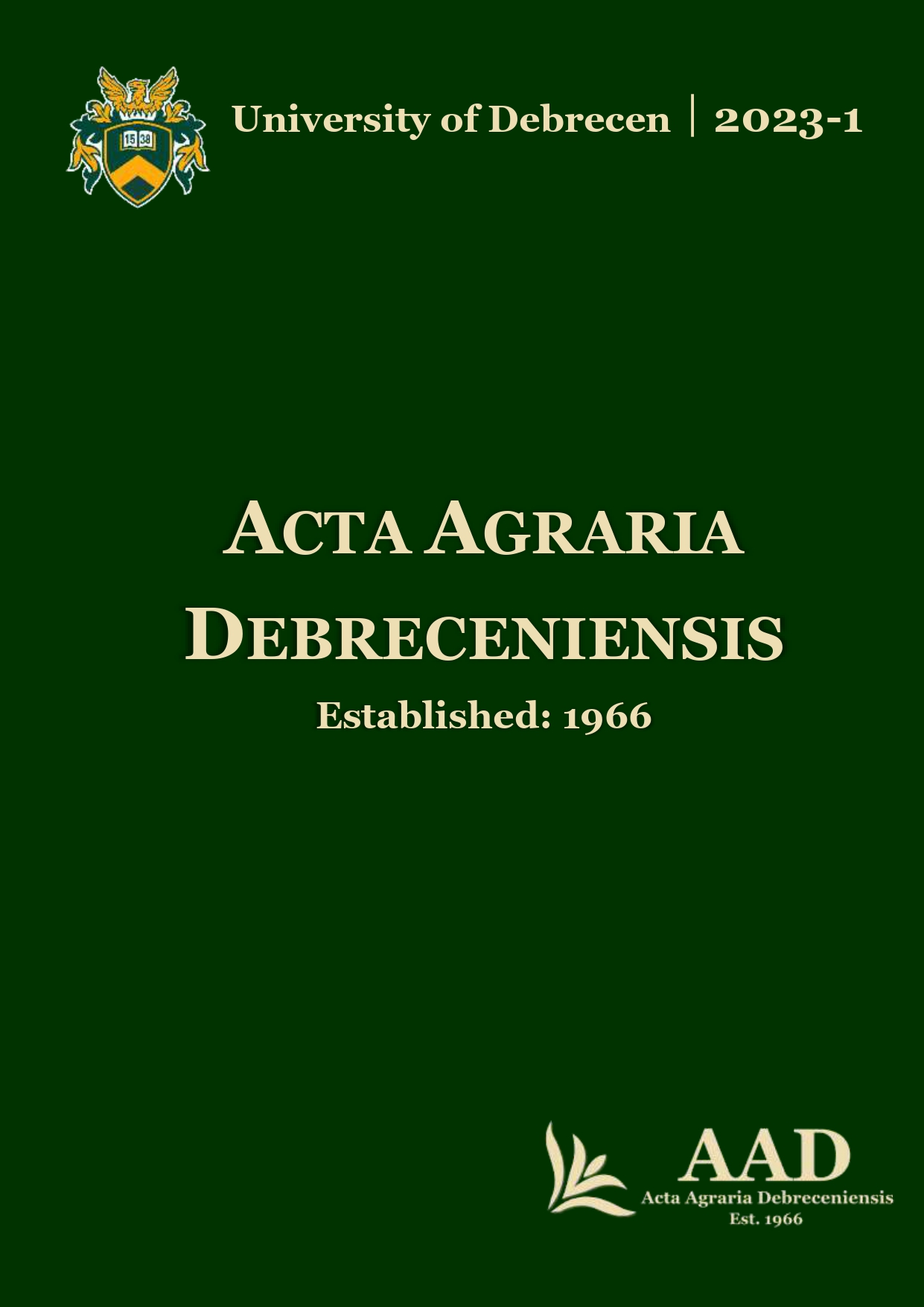Results of weed surveys in greening plants
Authors
View
Keywords
License
Copyright (c) 2023 by the Author(s)

This work is licensed under a Creative Commons Attribution 4.0 International License.
How To Cite
Accepted 2023-04-19
Published 2023-06-05
Abstract
Greening crops play an essential role in Hungary's agriculture. Weeds can also cause many problems during the development of greening plants. Our research aimed to evaluate the weed control properties of greening crops sown with different germination rates. Analysis of the effect of crop rotations on weed density. Comparison of weed growth in control, fertilised and greened areas. In October of 2021, a weed survey was carried out in lupin (Lupinus albus L.), common vetch (Vicia sativa L.), oil radish (Raphanus sativus var. oleiferus L.) and buckwheat (Fagopyrum eculentum Moench). During the weed survey, we determined the different weed species and their abundance. In terms of seed rates, the higher seed rates for lupin, oil radish, and buckwheat may be worth choosing for weed suppression. Plots in rotation III had the lowest weed incidence of all greening crops. The probable reason for this finding is that there was no prior greening in rotation III. For greening, the choice of buckwheat and oil radish will result in higher weed pressure. The most important weeds were the cereals sown before the greening crop. Fertilised plots had minimally fewer weeds than control plots. Research results show the difficulties of weed control in herbicide-free greening crops.
References
- Agroinform (2021): Minden, amit a zöldítésről tudnod kell! Szántóföld. https://www.agroinform.hu/szantofold/minden-amit-a-zolditesrol-tudnod-kell-52527-002
- Anil, L.–Park, J.–Phipps, R.H.–Miller, A.F. (1998): Temperate intercropping of cereals for forage: a review of the potential for growth and utilization with particular reference to the UK. Grass Forage Sci., 53. 301–317.
- Brust, J.–Claupein, W.–Gerhards, R. (2014): Growth and weed suppression ability of common and new cover crops in Germany. Crop Protection. Volume 63. 1–8. https://doi.org/10.1016/j.cropro.2014.04.022
- Ekwealor, U.K.–Echereme, B.C.–Ofobeze B.C.–Okereke, C.N. (2019): Economic Importance of Weeds: A Review. Asian Plant Research Journal. 3(2): 1–11, 2019; Article no.APRJ.52647. ISSN: 2581-9992. DOI: 10.9734/APRJ/2019/v3i230063
- Falquet, B.–Gfeller, A.–Pourcelot, M.–Tschuy, F.–Wirth, J. (2015): Weed Suppression by Common Buckwheat: A Review. Environ. Control Biol., 53 (1): 1–6. DOI: 10.2525/ecb.53.1
- Gonda, I. (2016): A pohánka és termesztése. https://agroforum.hu/agrarhirek/novenytermesztes/a-pohanka-es-termesztese/ Letöltve: 2022.02.22.
- Jacobs, A. (2012): Oilseed radish Raphanus sativus L. Plant Symbol = RASA2. USDA-NRCS Booneville Plant Materials Center, Arkansas. https://adminplants.sc.egov.usda.gov/factsheet/pdf/fs_rasa2.pdf
- Marsh, S.P.–Pannell, J.D.–Lindner, K. R. (2000): The impact of agricultural extension on adoption and diffusion of lupins as a new crop in Western Australia. Australian Journal of Experimental Agriculture. 40. (4): 571–583. https://doi.org/10.1071/EA99080
- Mikó, P. (2009): A zöldtrágyázás talajállapotra és utóveteményre gyakorolt hatásainak vizsgálata. Gödöllő, Magyarország: SZIE, Mezőgazdaság- és Környezettudományi Kar. Doktori értekezés.
- Neurburg, W.–Sárközy P. (1993): Gyomszabályozás tűzzel vassal. In: Sárközy P, Seléndy Sz, Biogazda 2. Biokultúra Egyesület. 44–55.
- Sipos, A. (2020): Az olajretek (Raphanus sativus L. convar. oleiferus) és a tavaszi bükköny (Vicia sativa L.) különböző termesztéstechnológiai változatainak hatása a termésmennyiségre, és a talaj nedvesség tartalmára. Debrecen, Magyarország: Mezőgazdaság- Élelmiszertudományi és Környezetgazdálkodási Kar. BsC thesis.
- Soylu, S.–Soylu, M.E.–Kara, M.–Kurt, S.–Choi, J.Y. (2020): First Report of Downy Mildew Disease Caused by Peronospora viciae on Common Vetch (Vicia sativa) in Turkey. Pland Disease. Vol. 104, No. 6. ISSN:0191–2917 https://doi.org/10.1094/PDIS-12-19-2568-PDN
- Tohru, T.–Takako, U. (1995): Weed Suppression by Buckwheat. Current Advances in Buckwheat Research. 693–697.

 https://doi.org/10.34101/actaagrar/1/12513
https://doi.org/10.34101/actaagrar/1/12513